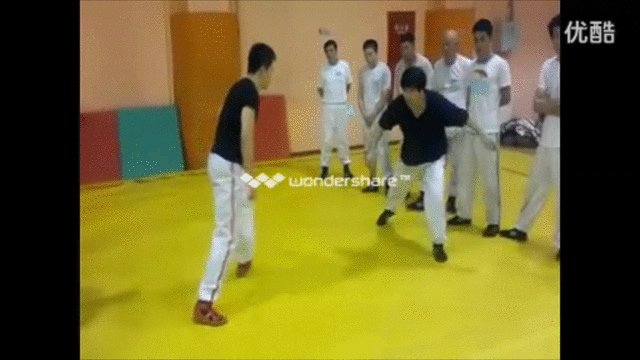Fungus
2nd Black Belt
I have a feeling this is the right place to ask, and I think some of you experienced here maybe can answer.
I'll try to make this short, I won't try to descrive the "constructing principles" of sanchin dachi, perhaps someone else will as part of the answer, but we know this is supposed to be a robust form, but my questions concerns the specific angles, and here different styles have different stanrds.
For example my kyokushin style says both back and front feet are approximately 45 degrees inwards. I always found this to be a close to impossible, if not highly unstable position for ME. If I force myself into it, I can barely manage to stay standing, and i would be an easy pray if someone hit me. I asked my instructors about this - in class - and got no good answer, not sure if it was due to lack ot time or not having an answer.
My idea is that the constructing princoples likely prescribes a "tension" in your legs, but what angles are required for the balance in tension and still mobility, must be linked to your individual anatomy.
I find the sanchin dachi as prescribed in shotokan, where the back foot is straight,and only fron is angled to be much more logical for me.
So can someone tell me the backstory why kyokushing sanchin dachi is so extreme? The only rational answer I can imagine myself is that the person (founder) that made this up, had a very odd anantomy with inward pointing toes? Or is there a more interesting explanation?
I'll try to make this short, I won't try to descrive the "constructing principles" of sanchin dachi, perhaps someone else will as part of the answer, but we know this is supposed to be a robust form, but my questions concerns the specific angles, and here different styles have different stanrds.
For example my kyokushin style says both back and front feet are approximately 45 degrees inwards. I always found this to be a close to impossible, if not highly unstable position for ME. If I force myself into it, I can barely manage to stay standing, and i would be an easy pray if someone hit me. I asked my instructors about this - in class - and got no good answer, not sure if it was due to lack ot time or not having an answer.
My idea is that the constructing princoples likely prescribes a "tension" in your legs, but what angles are required for the balance in tension and still mobility, must be linked to your individual anatomy.
I find the sanchin dachi as prescribed in shotokan, where the back foot is straight,and only fron is angled to be much more logical for me.
So can someone tell me the backstory why kyokushing sanchin dachi is so extreme? The only rational answer I can imagine myself is that the person (founder) that made this up, had a very odd anantomy with inward pointing toes? Or is there a more interesting explanation?

